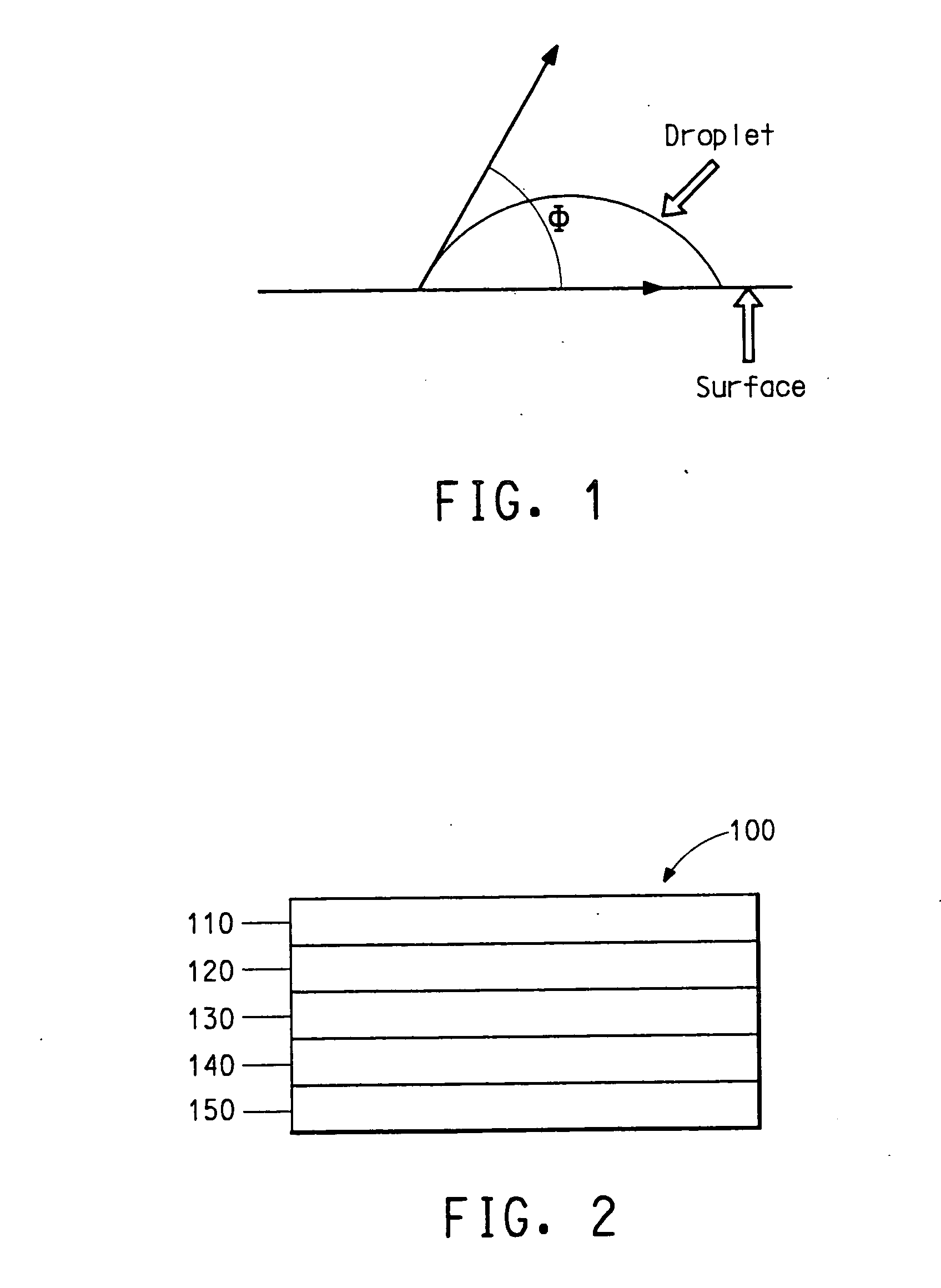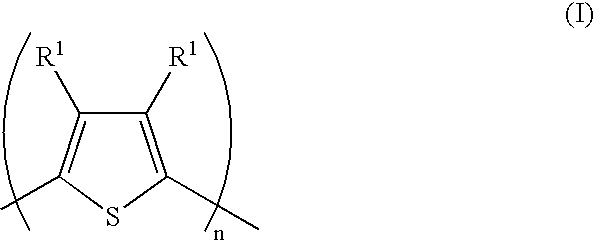Electrically conductive polymer compositions
- Summary
- Abstract
- Description
- Claims
- Application Information
AI Technical Summary
Problems solved by technology
Method used
Image
Examples
example 1
[0202] This example illustrates the preparation of an organic solvent wettable sulfonic acid polymer to be used in the preparation of a new conductive polymer composition. The polymer is a copolymer of 1,1 -difluoroethylene (“VF2”) and 2-(1,1-difluoro-2-(trifluoromethyl)allyloxy)-1,1,2,2-tetrafluoroethanesulfonyl fluoride (“PSEBVE”), which has been converted to the sulfonic acid form. The resulting polymer is referred to as “VF2-PSEBVE”.
[0203] A 400 mL Hastelloy C276 reaction vessel was charged with 160 mL of Vertrel® XF, 4 mL of a 20 wt. % solution of HFPO dimer peroxide in Vertrel® XF, and 143 g of PSEBVE (0.42 mol). The vessel was cooled to −35° C., evacuated to −3 PSIG, and purged with nitrogen. The evacuate / purge cycle was repeated two more times. To the vessel was then added 29 g VF2 (0.45 mol). The vessel was heated to 28° C., which increased the pressure to 92 PSIG. The reaction temperature was maintained at 28° C. for 18 h. at which time the pressure had dropped to 32 PSI...
example 2
[0206] This example illustrates the preparation of an organic solvent wettable sulfonic acid polymer to be used in the preparation of a new conductive polymer composition. The polymer is a copolymer of ethylene (“E”) and 2-(2-(1,2,2-trifluorovinyloxy)-1,1,2,3,3,3-hexafluoropropoxy)-1,1,2,2-tetrafluoroethanesulfonyl fluoride (“PSEPVE”), which has been converted to the sulfonic acid form. The resulting polymer is referred to as “E-PSEPVE acid”.
[0207] A 210 mL Hastelloy C276 reaction vessel was charged with 60 g of PSEPVE (0.13 mol) and 1 mL of a 0.17 M solution of HFPO dimer peroxide in Vertrel® XF. The vessel was cooled to −35° C., evacuated to −3 PSIG, and purged with nitrogen. The evacuate / purge cycle was repeated two more times. To the vessel was then added 20 g ethylene (0.71 mol) and an additional 900 PSIG of nitrogen gas. The vessel was heated to 24° C., which increased the pressure to 1400 PSIG. The reaction temperature was maintained at 24° C. for 18 h. at which time the pr...
example 3
[0210] This example illustrates the preparation of a conductive polymer composition by the oxidative polymerization of a precursor monomer in the presence of an organic solvent wettable fluorinated acid polymer. The precursor monomer was 3,4-ethylenedioxythiophene. The organic solvent wettable fluorinated acid polymer was E-PSEPVE acid from Example 2.
[0211] 54.09 g aqueous solution of 2.09% E-PSEPVE acid made in Example 2 and 55.22 g deionized water were poured into a 250mL Erlenenmeyer flask. The mixture was stirred with a magnetic stirrer for 10 minutes. 0.0886 mL (0.831 mmoles) of Baytron-M (a trade name for 3,4-ethylenedioxythiophene from H. C. Starck, Massachusetts, USA) was added to the reaction solution with stirring. The mixture was stirred for 30 minutes while a stock solution of ferric sulfate was being made. 0.0086 g ferric sulfate hydrate (97 %, Sigma-Aldrich Corp., St. Louis, Mo., USA) was dissolved with deionized water to a total weight of 21.2123 g. 2.61g of the ferr...
PUM
| Property | Measurement | Unit |
|---|---|---|
| Contact angle | aaaaa | aaaaa |
| Contact angle | aaaaa | aaaaa |
| Electrical conductivity | aaaaa | aaaaa |
Abstract
Description
Claims
Application Information
 Login to View More
Login to View More - R&D
- Intellectual Property
- Life Sciences
- Materials
- Tech Scout
- Unparalleled Data Quality
- Higher Quality Content
- 60% Fewer Hallucinations
Browse by: Latest US Patents, China's latest patents, Technical Efficacy Thesaurus, Application Domain, Technology Topic, Popular Technical Reports.
© 2025 PatSnap. All rights reserved.Legal|Privacy policy|Modern Slavery Act Transparency Statement|Sitemap|About US| Contact US: help@patsnap.com



